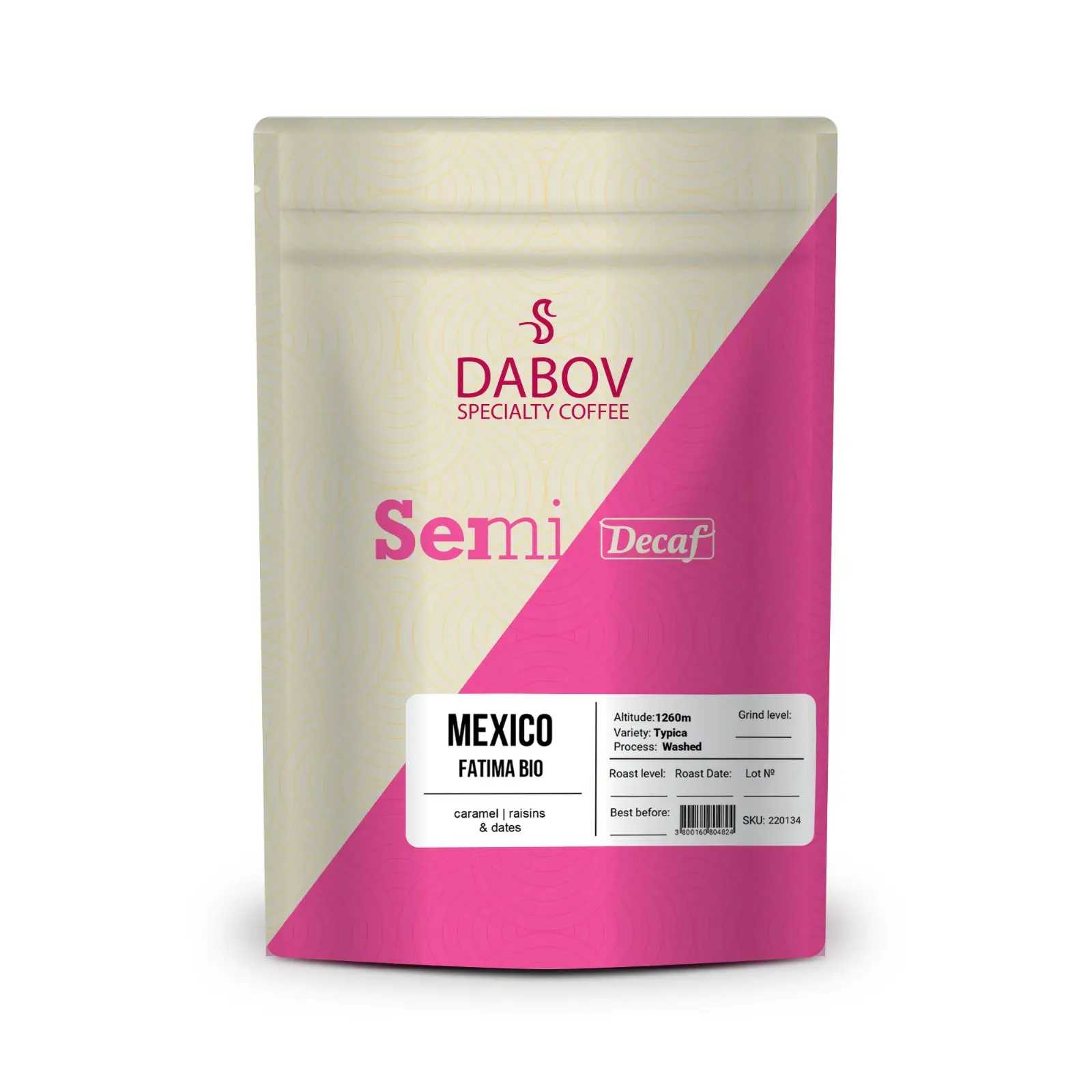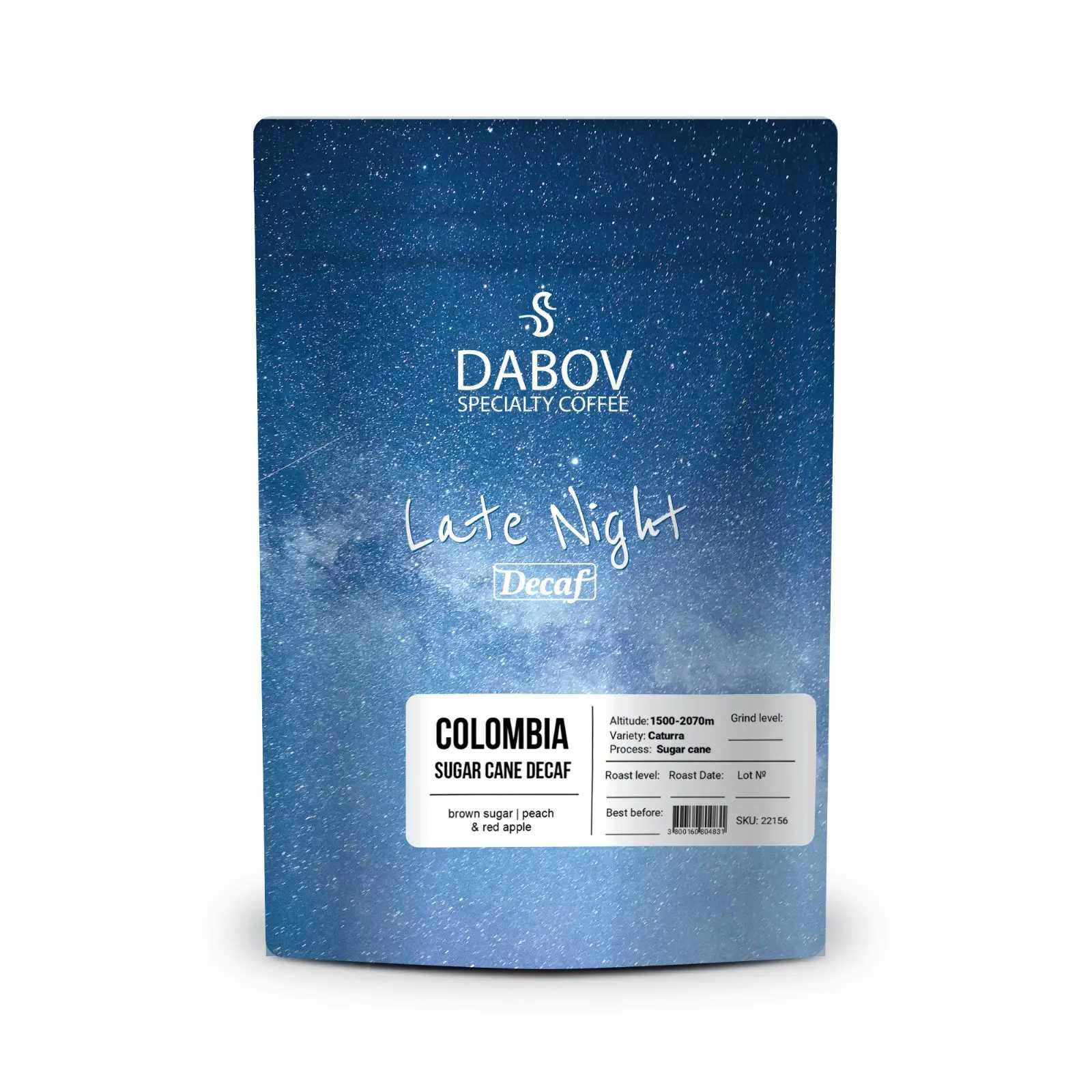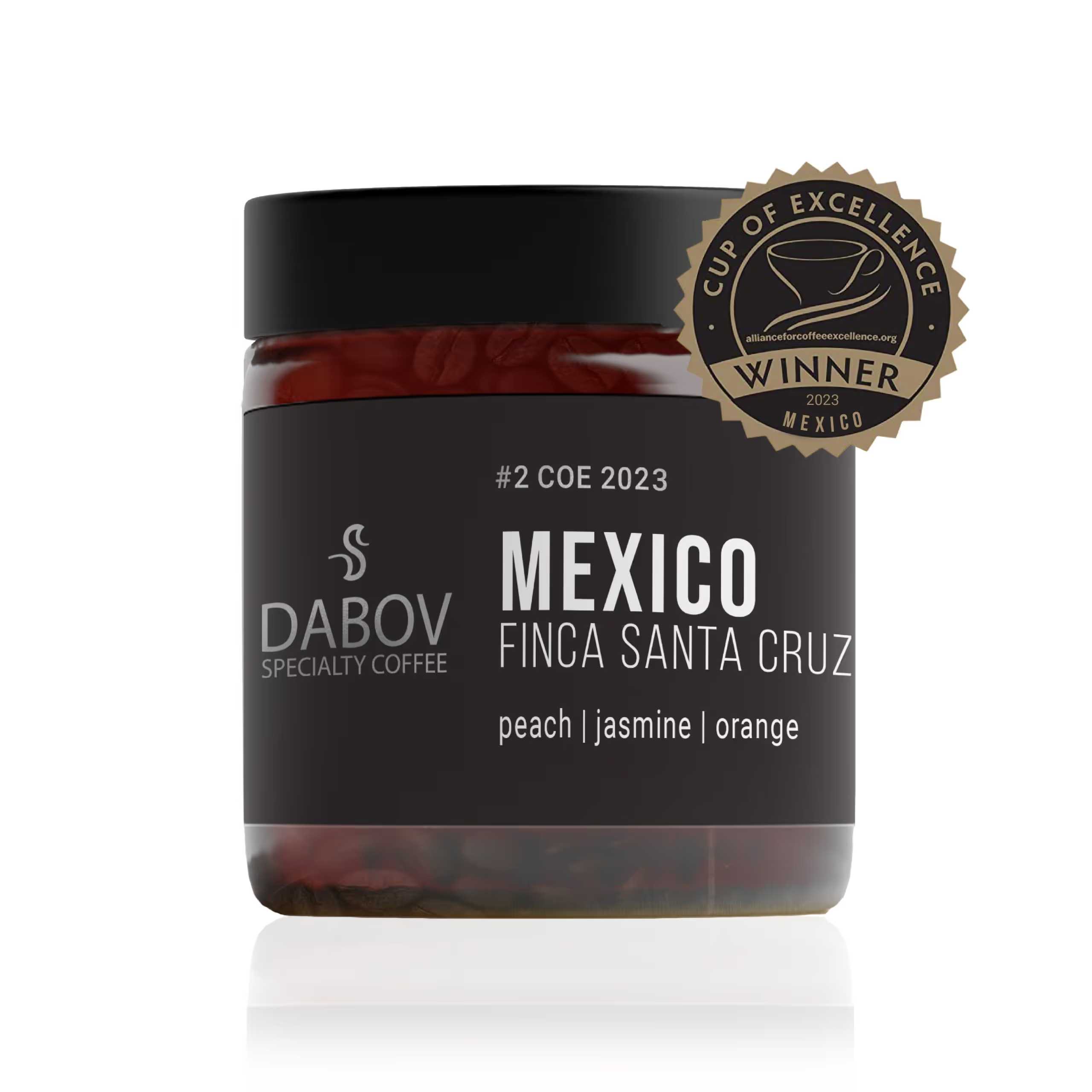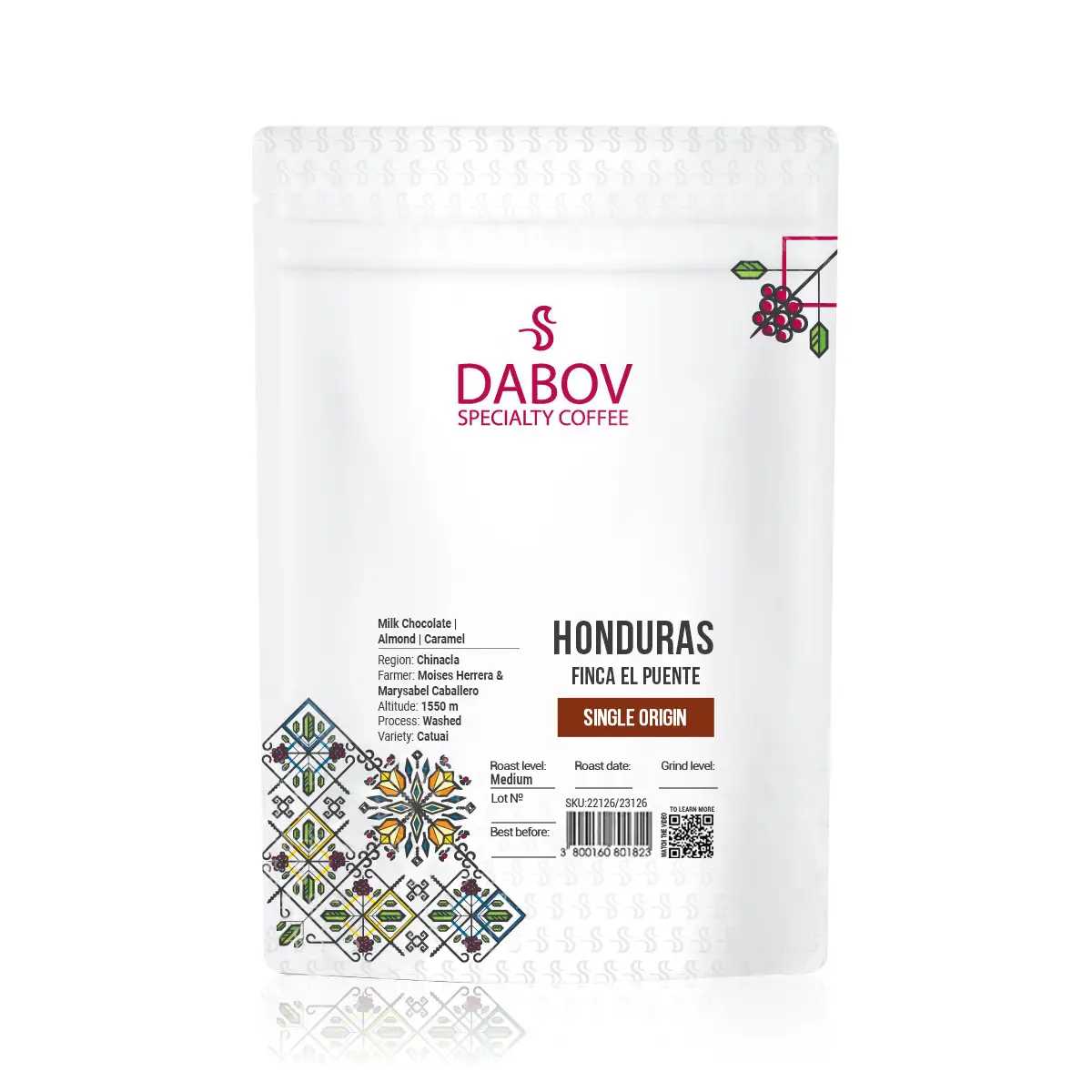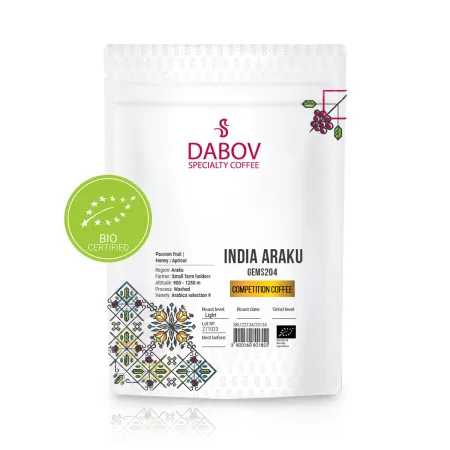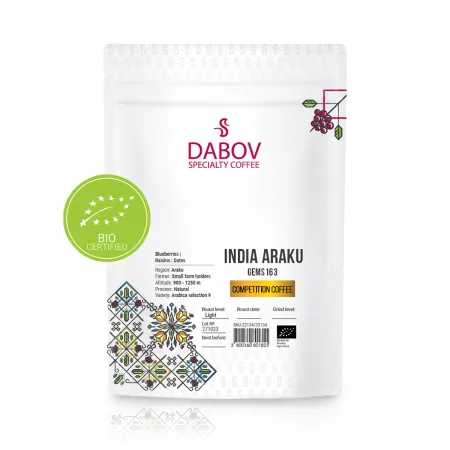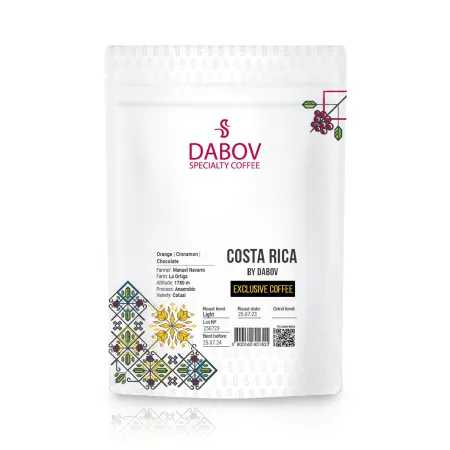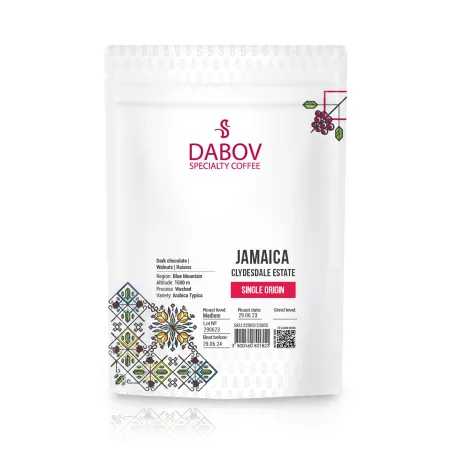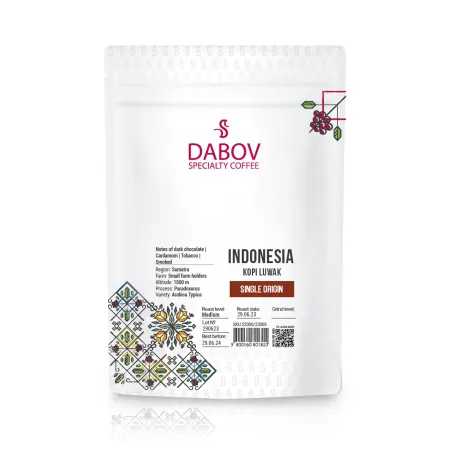The Floral and Fruity Coffees of Burundi
Burundi coffee is gaining buzz for its unique floral and fruity flavors. Nestled in the heart of Africa, this coffee origin boasts a rich landscape and ideal climate that contribute to its distinct taste. Elevating your coffee experience, you'll discover signature notes of jasmine, orange blossom, berries, and tropical fruits. This article dives into the geography, processing methods, and the specific regions of Burundi that craft this exquisite coffee. Whether you're a seasoned coffee enthusiast or new to the scene, our Burundi coffee guide will guide you through brewing techniques, pairings, and where to buy this exceptional brew. Learn why Burundi coffee is capturing hearts worldwide and how you can explore its rich tapestry of flavors.
In the world of specialty coffee, Burundi has emerged as a hidden gem, captivating the palates of coffee enthusiasts with its unique and complex flavor profiles. Nestled in the heart of East Africa, this small landlocked country produces some of the most distinctive and sought-after coffees in the world, characterized by their remarkable floral and fruity notes. As we embark on this journey through the coffee landscapes of Burundi, we'll explore the intricate factors that contribute to these exceptional flavors, from the country's diverse geography to its meticulous processing methods. Whether you're a seasoned coffee connoisseur or a curious newcomer, this comprehensive guide will deepen your appreciation for the floral and fruity coffees of Burundi and inspire you to explore this captivating origin.
I. The Landscape of Burundi Coffee Growing
A. Geography and Climate
Burundi's coffee-growing regions are blessed with a unique combination of geographical and climatic factors that create the perfect conditions for cultivating exceptional coffee. The country's landscape is dominated by rolling hills and mountains, with elevations ranging from 1,500 to 2,000 meters above sea level. This high-altitude terrain plays a crucial role in developing the complex flavor profiles that Burundi coffee is known for.
The majority of Burundi's coffee is grown in the northern and central regions of the country, where the soil is rich in volcanic minerals. This nutrient-dense soil, combined with consistent rainfall patterns and moderate temperatures, provides an ideal environment for coffee plants to thrive. The average annual temperature in these regions hovers around 18-20°C (64-68°F), with nighttime temperatures often dropping to cooler levels. This diurnal temperature variation is particularly beneficial for coffee cultivation, as it allows the cherries to develop slowly, resulting in denser beans with more concentrated flavors.
Burundi's proximity to the equator ensures a relatively stable climate throughout the year, with two distinct rainy seasons. The primary rainy season occurs from February to May, followed by a shorter period from September to November. These rainfall patterns are crucial for the coffee plants' flowering and cherry development stages, contributing to the consistent quality of Burundi coffee from year to year.
B. Coffee Varietals
The coffee varietals grown in Burundi play a significant role in shaping the unique flavor profiles that have put the country on the specialty coffee map. The most prevalent varietal is Bourbon, a highly regarded Arabica cultivar known for its excellent cup quality and complex flavor profile. Bourbon coffee from Burundi is particularly prized for its bright acidity, full body, and pronounced sweetness, often accompanied by notes of citrus, berries, and floral undertones.
In addition to Bourbon, Burundi also cultivates other Arabica varietals, including Jackson and Mibirizi. These varietals, while less common, contribute to the diversity of flavors found in Burundi coffee. Jackson, for instance, is known for its resistance to disease and its ability to produce a clean, balanced cup with subtle fruit notes. Mibirizi, on the other hand, is a local Burundian varietal that shares many characteristics with Bourbon but is adapted to the specific growing conditions of the region.
The predominance of these high-quality Arabica varietals in Burundi is a key factor in the development of the floral and fruity flavors that have become synonymous with coffee from this origin. The genetic makeup of these plants, combined with the unique terroir of Burundi, results in coffee cherries that are naturally predisposed to developing complex and nuanced flavor profiles.
II. Understanding Flavor Profiles
A. Floral Coffee Flavors
Floral notes in coffee are among the most prized and delicate flavor attributes, often associated with high-quality, specialty-grade beans. In the context of Burundi coffee, these floral flavors are a hallmark of the region's unique terroir and processing methods. When we speak of floral coffee flavors, we're referring to aromatic compounds that evoke the scent and taste of various flowers.
Common floral notes found in Burundi coffee include jasmine, orange blossom, and rose. Jasmine notes are particularly prevalent, offering a sweet, delicate fragrance that enhances the overall complexity of the cup. Orange blossom notes contribute a subtle citrusy sweetness, often accompanied by a light, perfumed aroma. Rose notes, while less common, can add a sophisticated and elegant dimension to the coffee's flavor profile.
The development of these floral flavors in coffee beans is a complex process influenced by various factors. At the molecular level, these flavors are the result of volatile aromatic compounds formed during the growth, processing, and roasting of the coffee. In Burundi, the high altitudes and cool temperatures slow down the maturation process of the coffee cherries, allowing for a more extended period of flavor development. This prolonged maturation contributes to the accumulation of aromatic precursors in the beans, which later translate into the floral notes we perceive in the cup.
Moreover, the specific soil composition in Burundi, rich in volcanic minerals, plays a crucial role in the formation of these floral flavors. The minerals are absorbed by the coffee plants and incorporated into the cherries, influencing the chemical makeup of the beans and, consequently, their flavor potential.
B. Fruity Coffee Profiles
Fruity flavors are another defining characteristic of Burundi coffee, often complementing and enhancing the floral notes. These fruity profiles can range from bright and citrusy to rich and berry-like, adding depth and complexity to the cup. When we describe coffee as having fruity notes, we're referring to flavor compounds that remind us of various fruits, both in taste and aroma.
In Burundi coffee, common fruity notes include berries (such as blackberry, raspberry, and blueberry), citrus fruits (like lemon, orange, and grapefruit), and tropical fruits (including pineapple and mango). Berry notes often contribute a sweet-tart flavor with a juicy quality, while citrus notes add brightness and acidity to the cup. Tropical fruit notes can bring a lush, exotic character to the coffee's flavor profile.
The development of fruity flavors in coffee is closely tied to the processing methods used after harvesting. In Burundi, both washed and natural processing methods are employed, each contributing differently to the final flavor profile. Washed processing, which involves removing the coffee cherry's fruit before drying the beans, tends to produce cleaner, brighter flavors with more pronounced acidity. This method often highlights citrus and berry notes in Burundi coffee.
Natural processing, where the entire coffee cherry is dried with the bean inside, allows for more prolonged contact between the fruit and the bean. This can result in more intense, sweeter fruit flavors, often emphasizing tropical fruit notes and creating a fuller body in the cup. The choice of processing method, therefore, plays a crucial role in determining the specific fruity characteristics that will be prominent in the final product.
III. Factors Influencing Floral and Fruity Flavors in Burundi Coffee
A. Processing Methods
The processing methods used in Burundi are instrumental in shaping the final flavor profile of the coffee, particularly in enhancing and preserving the floral and fruity notes. Three main processing methods are employed in Burundi: washed, natural, and honey processing. Each method imparts distinct characteristics to the coffee, influencing its acidity, body, and flavor complexity.
Washed processing, also known as wet processing, is the most common method used in Burundi. This method involves removing the coffee cherry's outer skin and pulp before fermentation and drying. The beans are then soaked in water for 12-36 hours, allowing natural enzymes to break down any remaining mucilage. After fermentation, the beans are thoroughly washed and then dried. This process results in a clean, bright cup with pronounced acidity and clarity of flavor. Washed Burundi coffees often exhibit vibrant floral notes, such as jasmine and orange blossom, along with crisp citrus and berry flavors.
Natural processing, while less common in Burundi, is gaining popularity for its ability to produce unique flavor profiles. In this method, the entire coffee cherry is dried with the bean inside, typically on raised beds or patios. As the cherry dries, it imparts more intense fruit flavors to the bean. Natural processed Burundi coffees often display pronounced tropical fruit notes, such as pineapple or mango, along with a fuller body and lower acidity compared to washed coffees. The floral notes in natural processed coffees tend to be more subtle but can include rose or lavender undertones.
Honey processing, a method that falls between washed and natural processing, is also used in some parts of Burundi. In this method, the coffee cherry's skin is removed, but some or all of the mucilage is left on the bean during drying. The amount of mucilage left on the bean determines whether it's a white, yellow, red, or black honey process. Honey processed Burundi coffees often exhibit a balance between the clean, bright flavors of washed coffees and the fruity intensity of natural processed coffees. They can display a range of floral and fruity notes, from delicate jasmine to rich berry flavors, with a slightly fuller body than washed coffees.
B. Harvesting Techniques
The harvesting techniques employed in Burundi play a crucial role in preserving and enhancing the floral and fruity flavors that make the country's coffee so distinctive. Coffee harvesting in Burundi is predominantly done by hand, a labor-intensive process that allows for greater selectivity and quality control.
Selective picking is the preferred method, where only fully ripe cherries are harvested. This technique ensures that each cherry has reached its peak ripeness, maximizing the development of sugars and flavor compounds within the bean. Pickers are trained to identify cherries at the perfect stage of ripeness, typically when they have turned a deep red color. This meticulous approach to harvesting is essential for producing high-quality coffee with complex floral and fruity profiles.
The timing of the harvest is also critical. In Burundi, the main harvest season typically runs from March to July, with some variation depending on the specific region and altitude. Harvesting at the right time ensures that the cherries have had sufficient time to develop their full flavor potential. Premature harvesting can result in underdeveloped flavors and higher acidity, while delayed harvesting can lead to overripe cherries with fermented flavors that mask the delicate floral and fruity notes.
Post-harvest handling is equally important in preserving the quality of the coffee. Once picked, the cherries are quickly transported to processing stations to prevent unwanted fermentation. Many farms and cooperatives in Burundi have implemented strict quality control measures, including flotation tanks to separate lower-density, defective cherries from high-quality ones. This attention to detail in the harvesting and initial processing stages is fundamental to maintaining the integrity of the floral and fruity flavors that define Burundi coffee.
IV. Notable Coffee Regions in Burundi
A. Gitega
Gitega, located in central Burundi, is one of the country's most prominent coffee-producing regions. Known for its high-altitude farms and ideal growing conditions, Gitega produces some of Burundi's most sought-after coffees. The region's elevation ranges from 1,700 to 2,000 meters above sea level, providing the perfect environment for slow cherry maturation and complex flavor development.
The coffees from Gitega are renowned for their bright acidity, full body, and complex flavor profiles. Floral notes are particularly pronounced in Gitega coffees, with jasmine and orange blossom being common descriptors. These floral characteristics are often accompanied by fruity notes of citrus and berries, creating a harmonious and nuanced cup profile.
The soil in Gitega is rich in volcanic minerals, contributing to the unique flavor characteristics of the coffee grown there. This mineral-rich soil, combined with consistent rainfall and moderate temperatures, creates an ideal terroir for coffee cultivation. Many of the farms in Gitega are small, family-owned operations, with coffee trees often intercropped with other plants such as bananas, which provide shade and help maintain soil health.
Gitega is also home to several well-respected washing stations and cooperatives, which play a crucial role in processing and quality control. These facilities have been instrumental in improving the overall quality of coffee from the region, implementing rigorous standards for cherry selection and processing. As a result, coffees from Gitega have gained recognition in international markets and competitions, further cementing Burundi's reputation as a producer of exceptional specialty coffee.
B. Ngozi
Ngozi, situated in northern Burundi, is another key coffee-producing region that has contributed significantly to the country's growing reputation in the specialty coffee market. The region is characterized by its rolling hills and fertile soils, with coffee farms typically situated at elevations between 1,600 and 1,800 meters above sea level.
The unique microclimate of Ngozi, influenced by its proximity to Lake Tanganyika, creates ideal conditions for coffee cultivation. The region experiences consistent rainfall and moderate temperatures, with cool nights that slow down the maturation process of the coffee cherries. This extended maturation period allows for the development of complex sugars and acids within the bean, resulting in coffees with exceptional sweetness and vibrant acidity.
Coffees from Ngozi are known for their distinctive fruity profiles, often featuring prominent notes of red berries, tropical fruits, and citrus. These fruity characteristics are balanced by a subtle floral undertone, typically reminiscent of jasmine or orange blossom. The body of Ngozi coffees tends to be medium to full, with a smooth, creamy mouthfeel that complements the complex flavor profile.
The soil in Ngozi is particularly rich in organic matter, contributing to the region's ability to produce coffees with deep, complex flavors. Many farmers in the area practice organic farming methods, which not only preserve the natural ecosystem but also enhance the unique terroir-driven qualities of the coffee.
Ngozi has seen significant investment in coffee processing infrastructure in recent years, with several modern washing stations established throughout the region. These facilities have played a crucial role in improving consistency and quality, implementing standardized processing methods that preserve and enhance the inherent flavors of the coffee. As a result, coffees from Ngozi have gained recognition in international markets, with several lots achieving high scores in cupping competitions and fetching premium prices.
V. Brewing Burundi Coffee
A. Best Brewing Techniques
To fully appreciate the delicate floral and fruity notes characteristic of Burundi coffee, it's essential to employ brewing techniques that highlight these unique flavor attributes. The goal is to extract the coffee's complex flavors while maintaining clarity and balance in the cup.
Pour-over brewing is often considered one of the best methods for Burundi coffee. This manual brewing technique allows for precise control over water temperature, flow rate, and extraction time. When brewing Burundi coffee using the pour-over method, start with a medium-fine grind size and a water temperature between 195°F and 205°F (90°C to 96°C). The slightly lower temperature range helps to preserve the delicate floral notes while still fully extracting the fruity flavors.
Begin with a bloom phase, where you wet the grounds with a small amount of water and allow them to degas for about 30 seconds. This step enhances the overall extraction and can help bring out the coffee's aromatic compounds. Then, proceed with a slow, steady pour in concentric circles, maintaining a consistent flow rate. The total brew time for a pour-over should be between 2.5 to 3.5 minutes, depending on the specific coffee and personal preference.
The French press is another excellent method for brewing Burundi coffee, particularly for those who prefer a fuller-bodied cup. Use a coarse grind and water just off the boil (around 200°F or 93°C). After adding the water, gently stir the grounds to ensure even saturation. Allow the coffee to steep for 4 minutes before slowly pressing down the plunger. This method can enhance the coffee's natural oils and result in a richer mouthfeel, which can complement the fruity notes of Burundi coffee.
For those who enjoy espresso, Burundi coffee can produce exceptional results with the right approach. Use a fine grind and a slightly lower dose than you might for other origins – around 18 grams for a double shot. Aim for an extraction time of 25-30 seconds, yielding about 36 grams of espresso. This can result in a beautifully balanced shot with pronounced floral aromatics and a sweet, fruity finish.
Regardless of the brewing method, always use freshly roasted beans and grind them just before brewing to ensure maximum flavor. Experiment with different ratios of coffee to water to find the perfect balance that highlights the unique characteristics of your specific Burundi coffee.
B. Coffee Pairings
Pairing food with Burundi coffee can enhance the overall tasting experience and bring out nuances in both the coffee and the accompanying dish. The floral and fruity notes of Burundi coffee make it versatile for pairing with a variety of flavors.
For breakfast pairings, consider light, fruity pastries that complement the coffee's natural sweetness. A lemon tart or a mixed berry Danish can echo the citrus and berry notes often found in Burundi coffee. For a savory option, try a quiche with goat cheese and herbs – the creamy texture and tangy flavor of the goat cheese can balance the coffee's acidity while the herbs can enhance its floral notes.
In the afternoon, Burundi coffee pairs beautifully with chocolate desserts. A dark chocolate truffle or a slice of flourless chocolate cake can bring out the coffee's fruity undertones while adding a rich, indulgent element to the pairing. For those who prefer less sweetness, a piece of high-quality dark chocolate (70% cocoa or higher) can create a sophisticated pairing that highlights the coffee's complexity.
For a unique pairing experience, try Burundi coffee with cheese. A mild, creamy brie can complement the coffee's floral notes, while a sharper aged cheddar can create an interesting contrast with its fruity flavors. Serve these with fresh fruits like strawberries or sliced pears to further enhance the tasting experience.
In the evening, Burundi coffee can be paired with light desserts that don't overpower its delicate flavors. A vanilla panna cotta or a lavender shortbread cookie can provide a subtle sweetness that allows the coffee's nuanced flavors to shine. For a more adventurous pairing, try a small scoop of high-quality vanilla ice cream with a shot of espresso poured over – the combination of hot and cold, along with the creamy texture of the ice cream, can create a delightful contrast with the coffee's bright acidity and fruity notes.
Remember, the key to successful coffee pairing is balance. The goal is to find combinations where both the coffee and the food complement each other, rather than one overpowering the other. Don't be afraid to experiment with different pairings to discover your personal favorites.
VI. The Growing Popularity of Burundi Coffee
A. Specialty Coffee Movement
The rise of the specialty coffee movement has played a pivotal role in bringing attention to Burundi's exceptional coffees. This global trend, characterized by a focus on quality, traceability, and unique flavor profiles, has created a perfect platform for Burundi's floral and fruity coffees to shine.
In recent years, Burundi has made significant strides in improving its coffee production and processing methods, aligning with the high standards demanded by the specialty coffee market. This has resulted in a marked increase in the quality and consistency of Burundi coffee, attracting the attention of specialty roasters and discerning consumers worldwide.
The Cup of Excellence (CoE) program, a prestigious competition and auction for high-quality coffees, has been instrumental in showcasing Burundi's potential. Since Burundi's first participation in the program in 2012, several lots have achieved remarkably high scores, with some surpassing the 90-point threshold on a 100-point scale. These accolades have not only brought international recognition to Burundi coffee but have also incentivized local farmers to focus on quality over quantity.
Moreover, the unique flavor profiles of Burundi coffee, with their distinctive floral and fruity notes, cater perfectly to the adventurous palates of specialty coffee enthusiasts. As consumers become more educated about coffee origins and processing methods, there's a growing appreciation for the nuanced flavors that Burundi coffees offer.
The specialty coffee movement has also fostered direct trade relationships between roasters and producers in Burundi. This model often results in better prices for farmers and greater transparency in the supply chain, further encouraging the production of high-quality coffee. Many specialty roasters now feature Burundi coffee prominently in their offerings, often as single-origin espressos or in carefully curated blends designed to highlight its unique characteristics.
B. Market Trends
The market for Burundi coffee has seen significant growth and evolution in recent years, driven by changing consumer preferences and increased recognition of its quality. According to recent data from the International Coffee Organization (ICO), Burundi's coffee exports have shown a steady increase, with a notable shift towards higher-value specialty grade coffees.
One of the most prominent trends is the growing demand for single-origin coffees, where Burundi has carved out a niche with its distinctive flavor profiles. Specialty roasters and coffee shops around the world are increasingly featuring Burundi coffee as a standalone offering, often highlighting specific regions or even individual farms. This trend towards greater specificity and traceability aligns perfectly with Burundi's small-scale farming model and diverse microclimates.
Another significant trend is the increasing popularity of light to medium roast profiles among specialty coffee consumers. These lighter roasts are ideal for preserving and showcasing the delicate floral and fruity notes that Burundi coffees are known for. As a result, roasters are adapting their approaches to bring out the best in Burundi beans, often employing carefully controlled roast profiles that highlight the coffee's natural sweetness and complexity.
The rise of home brewing, particularly accelerated by global events in recent years, has also benefited Burundi coffee. As consumers invest in quality brewing equipment and seek out unique coffee experiences at home, there's been an uptick in demand for premium, single-origin beans like those from Burundi.
In terms of market positioning, Burundi coffee is increasingly being recognized as a premium product, commanding higher prices in the specialty market. This trend is supported by improvements in quality control and processing methods at origin, as well as more sophisticated marketing strategies that emphasize Burundi's unique terroir and production methods.
Looking ahead, the future appears bright for Burundi coffee in the global market. As consumers continue to seek out new and exciting coffee experiences, Burundi's floral and fruity profiles are well-positioned to meet this demand. However, challenges remain, including the need for continued investment in infrastructure and training to ensure consistent quality and sustainable production practices.
VII. Burundi Coffee Guide: Where to Buy and Explore
A. Coffee Brands and Retailers
For those eager to experience the floral and fruity notes of Burundi coffee, several reputable brands and retailers offer high-quality options. When selecting a Burundi coffee, look for brands that provide detailed information about the coffee's origin, processing method, and flavor profile.
- Intelligentsia Coffee: This renowned specialty roaster often features Burundi coffees in their lineup. They work directly with producers and offer detailed information about each coffee's origin and flavor notes.
- Counter Culture Coffee: Known for their commitment to sustainability and quality, Counter Culture frequently offers Burundi coffees, often with specific lot information and tasting notes.
- Blue Bottle Coffee: This popular specialty coffee chain occasionally features Burundi coffees in their single-origin lineup, providing an accessible way to try these unique beans.
- Sweet Maria's: For home roasters, Sweet Maria's often stocks green Burundi coffee beans, allowing enthusiasts to roast their own and experiment with different profiles.
- Atlas Coffee Club: This subscription service sometimes includes Burundi coffee in their monthly offerings, providing an opportunity to taste it alongside other global origins.
When purchasing Burundi coffee, prioritize freshness and proper storage. Look for roast dates on packaging and try to consume the coffee within 2-4 weeks of roasting for optimal flavor. Store beans in an airtight container away from light, heat, and moisture to preserve their delicate flavors.
B. Coffee Tours in Burundi
For coffee enthusiasts looking to explore Burundi's coffee culture firsthand, several tour operators offer immersive experiences. These tours provide unique insights into the country's coffee production and allow visitors to engage directly with farmers and processors.
- Burundi Coffee Tours: This local operator offers customized tours of coffee farms and washing stations in various regions of Burundi. Visitors can participate in coffee picking, learn about processing methods, and enjoy cupping sessions with local experts.
- Experience Burundi: While not exclusively focused on coffee, this tour company includes visits to coffee cooperatives and farms as part of their cultural tours, providing a broader context for understanding Burundi's coffee industry.
- Kibira National Park Tours: Some tour operators combine visits to coffee farms with excursions to Kibira National Park, home to some of Burundi's highest-altitude coffee-growing regions.
When planning a coffee tour in Burundi, consider visiting during the harvest season (typically March to July) for the most comprehensive experience. Be prepared for rural conditions and bring appropriate clothing and footwear for farm visits.
It's important to note that while coffee tourism in Burundi is growing, it's still a developing sector. Visitors should be prepared for a more adventurous and less commercialized experience compared to more established coffee tourism destinations. Always book through reputable operators and check current travel advisories before planning your trip.
Conclusion
The floral and fruity coffees of Burundi represent a unique and captivating segment of the global coffee landscape. From the lush, high-altitude farms of Gitega and Ngozi to the meticulous processing methods employed throughout the country, every aspect of Burundi's coffee production contributes to its distinctive flavor profiles.
The combination of ideal growing conditions, traditional farming practices, and a focus on quality has positioned Burundi as a rising star in the specialty coffee world. The country's coffees, with their delicate floral notes of jasmine and orange blossom, complemented by vibrant fruity flavors ranging from citrus to berries, offer a sensory experience that is truly one-of-a-kind.
As we've explored, the journey of Burundi coffee from seed to cup is a testament to the dedication and skill of the country's farmers and processors. The growing recognition of Burundi coffee in the global specialty market not only celebrates these efforts but also contributes to the sustainable development of the country's coffee industry.
For coffee lovers, exploring the world of Burundi coffee opens up new realms of flavor and appreciation. Whether brewed as a pour-over to highlight its delicate nuances, or enjoyed as an espresso to experience its full-bodied complexity, Burundi coffee offers something special for every palate.
As you embark on your own journey with Burundi coffee, remember that each cup represents not just a beverage, but a story – a narrative of terroir, tradition, and the tireless efforts of those who bring this exceptional coffee to the world. So, the next time you have the opportunity, indulge in a cup of Burundi coffee and savor the unique flavors that have made it a favorite among coffee connoisseurs worldwide.



